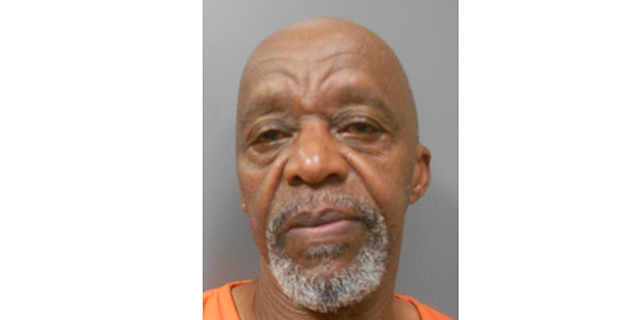Charles family lawyers say report proves attempted cover up
Published 6:00 am Wednesday, January 20, 2021
Attorneys for the family of Quawan Charles released a private toxicology report Monday that shows the teen had THC, the psychoactive ingredient in marijuana, and alcohol in his system, but not hallucinogens as Janet Irvin, the mother of one of Charles’ friends who drove her son to pick up Charles in Baldwin on Oct. 30, said to private investigators.
In a statement released Tuesday, attorneys with Haley and Associates, the firm representing the Charles family, said they had received the toxicology report, but did not specify when it was received. The 15-year-old was last seen on Oct. 30 and was found dead in a ditch adjoining a cane field near Loreauville several days later.
“We obtained the results of the toxicology report conducted in conjunction with the independent autopsy the Charles family commissioned in their attempt to find the truth surrounding the death of Quawan,” according to the statement that accompanied the toxicology results from NMS Labs in Horsham, Penn. “Both THC and ethanol were located in Quawan’s system. However, no other chemicals were found. Our investigators were told by members of the Irvin family and their inner circle that Quawan was high on a hallucinogen(s), which may have been the reason Quawan left the Irvin residence on foot and never returned. This emphatically proves that they were lying in an attempt to cover up what happened to Quawan.”
Issues with timing
The lab report report was written on Dec. 2 — three weeks before attorneys Ronald Haley and Chase Trichell went on national television saying that they had not yet seen the toxicology tests.
During that interview with CBS News, they demanded that Irvin be arrested based on interviews their private investigators had conducted with Irvin and her son.
“We think the toxicology report is going to vindicate what we’re saying today,” attorney Chase Trichell said in an interview that aired on Dec. 22. “Janet Irvin could be charged with delinquency to minors, serving minors drugs.”
In reality, the toxicology report had been completed 20 days prior.
There are also scientific issues with the report. The results are based on cavity blood samples taken on the afternoon of Nov. 13. For post-mortem ethanol testing, femoral blood is preferred to prevent alcohol from the stomach or other tissues spreading to the sample. The concentration in the tested sample, 0.014 g/100 ml blood alcohol content, is also very low, well beneath the legal limit for intoxication. But according to a National Institute of Health study, ethanol metabolizes at a rate of 0.01 g/100 ml, making a determination of Charles’ state at the time of death hard to estimate. Estimation of ethanol content in drowning cases is also more difficult.
The report also shows that the blood sample had 4.7 ng/ml of Delta-9 THC present. In occasional marijuana users, however, the amount of THC in the blood should drop to almost 0 within eight hours of use.
The official investigation
A clerk with the Iberia Parish Coroner’s Office confirmed Tuesday that their toxicology screen has not yet been completed. The samples for that test were taken much closer to Charles’ time of death than the samples provided for the family’s testing.
According to IPSO Media Relations Director Katherine Breaux, the attorneys said they would provide recordings of the interviews between Irvin and her son and the private investigators to the IPSO. She confirmed that representatives of the attorneys finally met with IPSO investigators on Tuesday, almost a month after they released the information from the interviews to the national media.
She was not able to confirm or deny what information was exchanged Tuesday, citing the ongoing investigation.
Calls to Haley’s office Tuesday were not returned.
Almost two weeks after the attorney’s interview was broadcast, on Jan. 4, Quawan Charles’ first cousin, Celina Charles, also said the toxicology results from the private autopsy had not been completed. She and family members marched into the IPSO lobby of the Iberia Parish Courthouse that day demanding Irvin’s arrest.
Where it began
Surveillance videos from a camera at the Baldwin Redi-Mix Concrete plant show Irvin’s vehicle as it pulled into the driveway at the home of Kenneth Jacko, Charles’ stepfather, at 1:45 p.m. on Oct. 30. In the video recording, Irvin and her son get out of the vehicle, then walk with Charles into the backyard of the home. A few minutes later all three return, get into the vehicle and leave the house.
Some six hours after Charles is seen on video leaving the house in Baldwin, St. Mary Parish Sheriff’s Office dispatchers handled a call from his mother, Roxanne Nelson, saying that her son was missing.
After Irvin and her son picked up Charles, they returned to Loreauville, where Irvin lived in a mobile home park off Mary Beth Drive, near Our Lady of Victory Church. IPSO investigators said they spoke to a witness who saw Charles out alone in the area Friday. They also located a video of the teen, still alone, in the area near the cane field where his body would be found four days later.
According to both the official and private preliminary autopsy reports, Charles drowned that Friday night in a drainage ditch alongside the cane field.
In the audiotape the attorneys provided to CBS, they say Irvin admitted that she should have done more to locate Charles after he disappeared from her home on Oct. 30.
Continued questions
In the statement released Tuesday, the Haley and Associates attorneys postulated that the lack of hallucinogens in Quawan Charles’ toxicology screen “likely proves” that his death was intentional, not accidental — which it does not, although it does leave unanswered questions about the teen’s last hours of life.
“Quawan’s cause of death is still drowning,” the statement read. “If Quawan died in the sugar cane field, he could not have drowned in water ‘ankle’ deep without human intervention, as drug use being a contributing factor has been minimized if not completely ruled out. If he did not drown in that sugar cane field then additional questions must be answered. Where did he drown at? Why was he moved and dumped in the sugar cane field? And most importantly who was involved in his death and cover up?”





